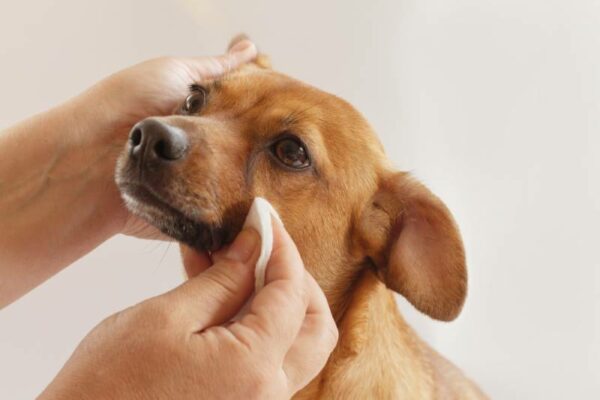Introduction to Tear Stains in Dogs
Tear staining is a common issue in dogs, especially those with white coats, such as Bichon Frises, Shih Tzus, and Maltese dogs. However, it can also occur in dogs with darker coats, although it may not be as noticeable. Tear stains are caused by an iron-containing molecule called porphyrin, which is normally excreted in a dog’s tears, saliva, and urine. When excessive tears are produced or don’t drain properly, they can overflow onto the hair around the eyes, resulting in characteristic reddish-brown stains.
What Causes Tear Stains?
To address tear stains, it’s essential to understand their underlying causes. Excessive tear production or poor drainage can lead to tear stains. In some breeds, the anatomy of the eye and nose can make it difficult for tears to drain properly, resulting in overflow and staining. Additionally, underlying medical conditions such as eye infections, corneal damage, or glaucoma can cause increased tear production and subsequent staining.
DIY Tear Stain Daily Cleansers
Before attempting to remove tear stains, it’s crucial to rule out any underlying medical issues. If your dog suddenly develops tear stains, consult with a veterinarian to determine the cause. Once any medical issues are addressed, you can try DIY tear stain cleansers. There are two options:
Option 1: Boric Acid Powder and Distilled Water
To make this solution, you’ll need:
- Boric acid powder
- Distilled water
Boil one cup of boric acid powder in a cup of distilled water, let it cool, and apply it to the area around the eye with a cotton pad. Gently rub the tear-stained area and keep the mixture in the fridge for up to a week. Repeat the process daily.
Option 2: Saline Solution and Cotton Pads
To make this solution, you’ll need:
- Saline solution
- Cotton pads
Apply the saline solution to a cotton pad and gently rub the area under the eyes. Use a new cotton pad for the second eye to prevent spreading bacteria.
More Tear Stain Control Tips
In addition to DIY cleansers, there are several other steps you can take to control tear stains:
See a Vet
Consult with a veterinarian to rule out any underlying medical issues that may be causing tear stains. If your dog has a medical condition, your vet can advise on the best course of treatment.
Keep the Eye Area Clean, Dry, and Groomed
Gently dry the eye area with a paper towel or cotton pad after your dog drinks water. Consider trimming the facial hair to help keep tear staining under control. Clean your dog’s face twice daily with a slightly damp cotton wool ball, starting with the eyes and working your way down.
Consider Food Quality
Food allergies can contribute to tear stains. Discuss any dietary changes with your vet before making them, and consider a more appropriate diet for your dog if they have food allergies.
Offer Purified Water
Water with high iron or mineral content may contribute to tear staining. Try offering filtered water instead, which has a lower mineral content. However, don’t give your dog distilled water as their drinking water.
Consider Food Supplements
Some supplements claim to reduce the amount of porphyrin in a dog’s tears, which can help minimize tear staining. However, consult with your vet before adding any supplements to your dog’s diet.
Use Commercial Products
If you’re not comfortable making your own DIY tear stain solutions, you can find plenty of commercial products available in pet stores or online. Some sources recommend gently rubbing a mild, pet-friendly shampoo or baby shampoo around the eyes.
Conclusion
Tear stains in dogs can be a challenging issue to address, but by understanding their causes and taking a multi-faceted approach, you can help minimize their appearance. Remember to consult with a veterinarian to rule out any underlying medical issues and consider factors such as diet, water quality, and grooming rituals. With patience and persistence, you can help keep your dog’s eyes clean and stain-free.

